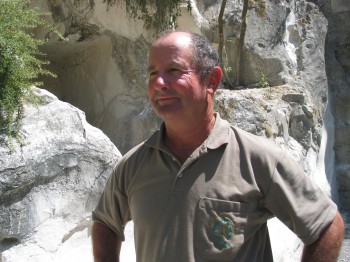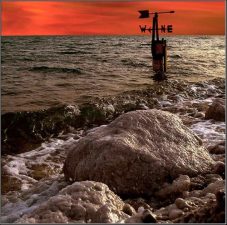 Is King Herod’s “City by the Sea” doomed once again? Man-made developments have put Caesarea at risk.
Is King Herod’s “City by the Sea” doomed once again? Man-made developments have put Caesarea at risk.
The ancient sea port and other archeological sites in the Israel coastal community of Caesarea is being threatened by encroaching sea water due to a lack of natural sand, according to Zeev Margalit, Architect and Director of Conservation and Development for Israel’s Nature and Parks Authority. Margalit has been involved in restoring and preserving a number of archeological sites around Israel, including the well known excavations at Masada near the Dead Sea. In March, 2007 sent a warning that much of the excavations at this popular historic site were in danger of being destroyed as the result of an unusually heavy rainfall, unless repair work estimated at $18 million be spent to repair them. Another project Margalit has been involved in is the Old City of Acre (Akko) where its weakened sandstone walls are being threatened by the forces of the wind and sea.
 Zeev MargalitNow Maraglit is turning his attention to the ancient seaport and archeological excavations of Caesarea, situated on the Mediterranean Sea coast, about midway between the cities of Tel Aviv and Haifa. Originally built between 22 and 15 BCE by Herod the Great, and dedicated to the Roman Caesar Augustus, this seaport became known as the one of the largest man made seaports in the Eastern Mediterranean; and was lauded by the historian Josephus Flavius as “being as large as the one at Piraeus, the major harbor of Athens”.
Zeev MargalitNow Maraglit is turning his attention to the ancient seaport and archeological excavations of Caesarea, situated on the Mediterranean Sea coast, about midway between the cities of Tel Aviv and Haifa. Originally built between 22 and 15 BCE by Herod the Great, and dedicated to the Roman Caesar Augustus, this seaport became known as the one of the largest man made seaports in the Eastern Mediterranean; and was lauded by the historian Josephus Flavius as “being as large as the one at Piraeus, the major harbor of Athens”.
The modern excavations of Caesarea have become a very popular visitation site for both foreign tourists and locals who also enjoy dining in several restaurants that have been opened at the site, which includes the remains of a Crusader fortress and a restored amphitheater where concerts and theatrical events are held during the year.
According to Margalit, the main problem facing the ancient port and nearby excavations is not from global warming, as mentioned in a previous Green Prophet article dealing with the Nile Delta, but by sea sand not reaching the shoreline due to it being stopped by modern man-made structures such as marinas, sea ports, and numerous real estate developments.
When interviewed recently, Margalit said the following regarding the ancient sea port’s condition: “The main problem affecting the deterioration of coastal archeological sites like Caesarea, is a lack of sand in the eastern Mediterranean. This was also the case in King Herod’s time and can be seen by the way the sea cuts the aqueducts which were built by Herod to carry water from springs in the Carmel mountain range to Caesarea on the coast. The Aqueduct has been literally cut through in the middle by the sea.”
The Mediterranean has been the center of a number of environmental issues, including those dealing with pollution from plastic material and other debris, natural gas exploration and production off Israel’s coastline, as well as the invasion of unwanted species of marine life, such as jellyfish, which marine biologists say is partially attributed to increased sea temperatures
The problem of not enough natural sea sand is something that is relatively new to bring to peoples’ attention, even though sand disappearing from public beaches has been a known fact for some time.
When asked what is needed to be done to keep the incoming sea from literally collapsing what remains of Caesarea’s ancient sea port and the structures sitting above it, Margalit is very emphatic. He says that an investment of at least NS 60 million ($16.67 million USD) is needed to do the necessary work. This work deals with area beaches and the port area in Caesarea, which need to be repaired by bringing in “imported” sand from elsewhere, building a new and larger breakwater outside of the port, and creating bunkers to cause incoming sand to flow in to serve as a barrier against the incoming tides.
“If it takes one winter or 10 winters the ancient city and port will be damaged beyond repair. We need to do something immediately and in a very short time of no more than 5 years. Changes are occurring right in front of our eyes. When we try to get action toward these projects, the government does not want to cooperate.”
Judging from other examples of dealing with environmental damage, Margalit’s words sound all too familiar.
More on Mediterranean environmental issues:
Sea Sickness: What Can be Done to Save the Mediterranean?
Natural Gas Wins in the Mediterranean, But the Environment Loses
Is The Mediterranean Harboring a Giant Plastic Garbage Patch?




Comments are closed.